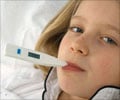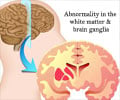Epilepsy seems a looming threat in US. Columbia University researchers have calculated that one in 26 persons, approximately 3.85 per cent of the population, could develop epilepsy in their lives.
In their findings, published in Neurology, they said, “Previous studies that have assessed the risk of developing epilepsy have failed to account for the competing risk of death, significant in the elderly where epilepsy incidence is highest. We report the lifetime risk for epilepsy, accounting for the competing risk of mortality,”They examined the lifetime risk and cumulative incidence of epilepsy among Rochester, MN, residents between 1960 and 1979. Lifetime risk was calculated as the conditional probability of developing epilepsy by a specific age for a person reaching that age who had not yet developed epilepsy. Lifetime risk and cumulative incidence were compared for age and time period.
The researchers led by D.C. Hesdorffer, PhD, identified 412 individuals with incident epilepsy diagnosed between January 1, 1960, and December 31, 1979. Men are more likely to get the seizure disorder than women. Previous work has shown the condition is fairly common in infants (hitting about 100 per 100,000) then trails off as kids grow up. For adults, the risk really starts to climb after age 50.
So they concluded, “One in 26 people will develop epilepsy during their lifetime. Lifetime risk provides an estimate of an individual's risk for epilepsy over his or her remaining lifetime, translates into the number of people who are expected to develop epilepsy, and assists health care planners as they estimate service needs for epilepsy.”
Dale C. Hesdorffer said in a statement, "Our results highlight the need for more research using epilepsy surveillance data, especially given the aging population in the United States, " said lead study author and epidemiologist.
The National Institute for Neurologic Disorders and Stroke and the National Institutes of Health funded the work.
Advertisement
Source-Medindia













